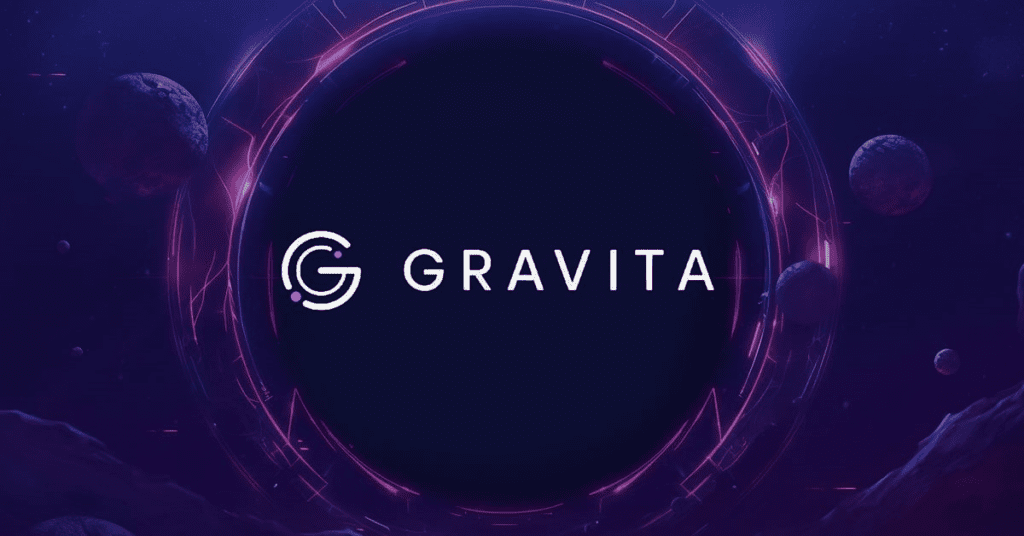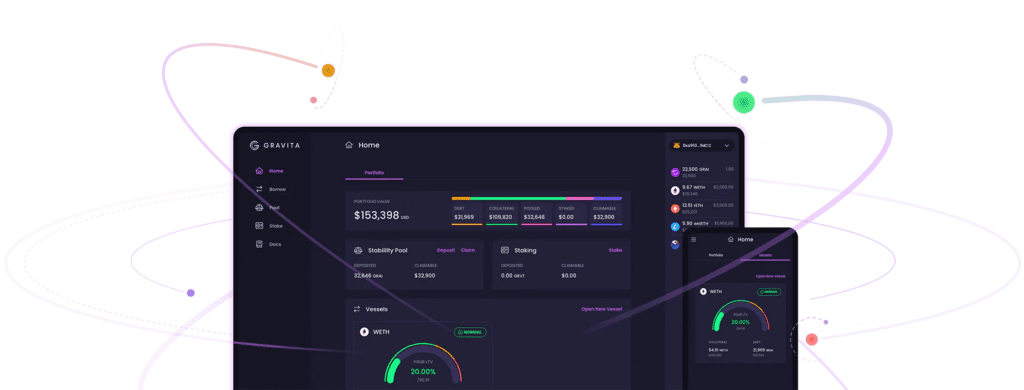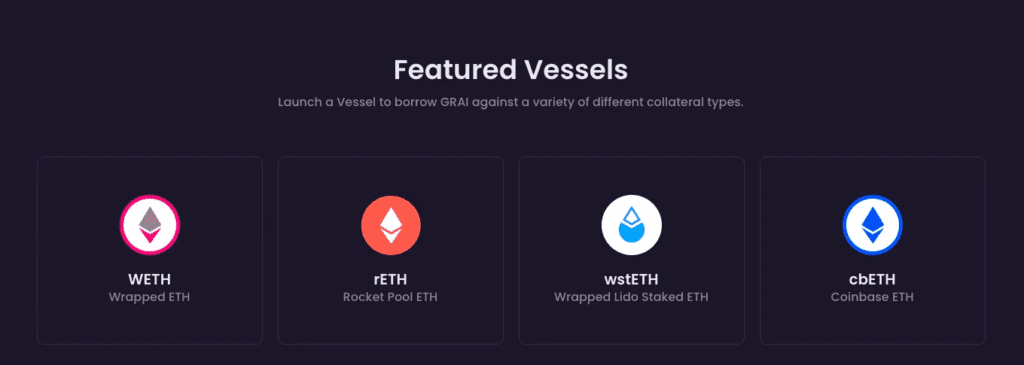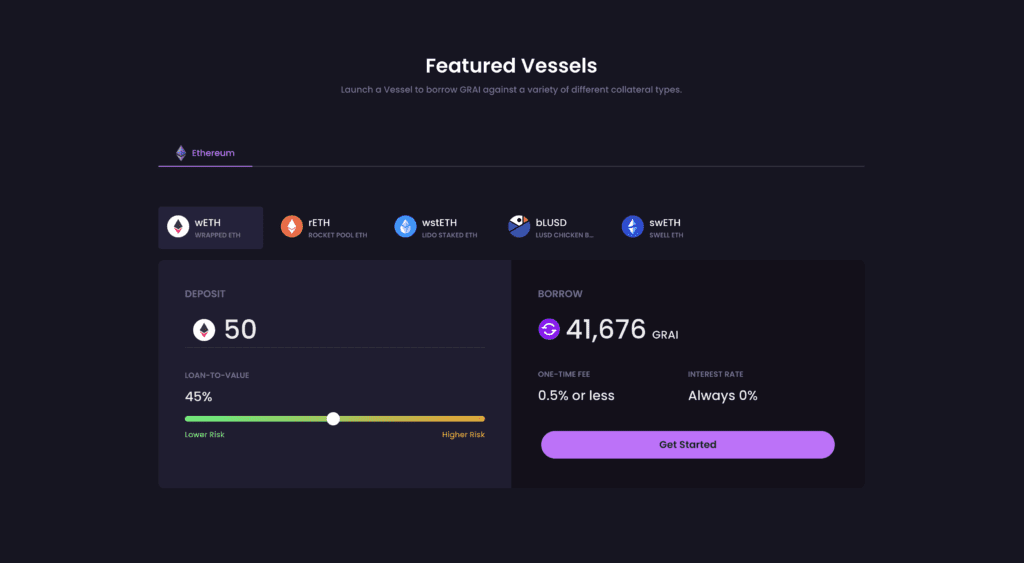In the fast-evolving landscape of decentralized finance (DeFi), one project is shining bright as it follows the LSDfi trend, and its name is Gravita Protocol. This emerging protocol is making waves, riding the current boom alongside popular projects. Let’s learn details about this project with Coincu through this Gravita Review article.

What is Gravita Protocol?
Gravita Protocol offers a unique and efficient lending and borrowing platform. Focused on Liquid Staking Tokens (LSTs) like stETH, rETH, bETH, sfxrETH, ETHX, and stablecoins, the protocol introduces a novel approach to mint stablecoin GRAI, enabling users to profit by providing liquidity to Stable Pools and engaging with other DeFi protocols.
One of the key pillars of the Gravita Protocol lies in its adoption of Liquity’s economic model, which forms the foundation of its ecosystem. This model ensures a seamless borrowing process and timely liquidations of tokens, boosting overall efficiency. Unlike conventional lending platforms, Gravita Protocol doesn’t charge interest on loans. However, users are required to pay a standard 0.5% borrowing fee upfront for each new debt or debt increase.
In a move to incentivize short-term borrowings and encourage responsible borrowing behavior, the protocol offers a refund on the borrowing fee if the user repays the debt within six months. Nevertheless, it’s important to note that a minimum fee equivalent to one week’s interest still applies in such cases.
The multi-collateral design of the Gravita Protocol brings further sophistication to the platform. Each position is restricted to a single collateral type, ensuring streamlined and consistent collateral management. All collaterals within the protocol are linked to the same stability pool, guaranteeing stability and simplicity.
Loans issued through the Gravita Protocol are denominated in GRAI tokens, featuring a volatility-dampening mechanism akin to Liquity’s LUSD. This innovation brings a new level of stability and predictability to the borrowing experience, mitigating the impact of market fluctuations. Now, the Gravita Review article will explore how the project works.
How does it work?
The heart of the Gravita Protocol lies in its Vessel concept, which serves as a mechanism for users to deposit their collateral and borrow GRAI tokens against it. By depositing their LSTs into a Vessel, users determine the value of their collateral, which, in turn, determines the amount of GRAI tokens they can borrow, going up to 90% of their collateral’s value.
Step 1: Borrow GRAI – Leveraging Collateral with Zero Interest
To initiate the process, users open a Vessel and deposit their collateral, enabling them to borrow GRAI tokens with a maximum fee of 0.5%. One significant advantage of this model is that the loans are interest-free indefinitely, providing borrowers with the freedom to leverage their collateral without the worry of accumulating interest charges.
Step 2: Deploy GRAI – Flexibility and Rewards
Once borrowers acquire GRAI tokens, they have multiple options at their disposal. Each GRAI token carries a value equivalent to $1, offering a stable and predictable currency. Borrowers can choose to swap or spend their GRAI tokens according to their preferences.
A noteworthy feature is the option to deposit GRAI tokens into the Gravita Stability Pool. Here, users can purchase WETH (Wrapped Ethereum) and LSTs at discounted rates, providing enhanced utility and flexibility for their GRAI tokens.
Step 3: Repay GRAI – Encouraging Responsible Borrowing
When borrowers wish to close their Vessels and withdraw their collateral, they effectively repay the loan, finalizing the borrowing process. Gravita Protocol sets itself apart by incentivizing responsible borrowing behavior. If borrowers repay the loan within six months, they become eligible for a partial refund of the 0.5% fee paid during the borrowing process. This unique feature encourages timely loan repayments, benefiting both borrowers and the overall stability of the protocol.
GRAI’s Peg Hold Mechanism – A Balancing Act
Gravita Protocol’s innovative peg hold mechanism plays a crucial role in maintaining the stability of the GRAI token. When the value of GRAI surpasses $1, users can mortgage additional assets to mint more GRAI tokens and capitalize on the price difference by selling GRAI on the market.
Conversely, if the GRAI value drops below $1, users can seize the arbitrage opportunity by purchasing GRAI from the market and exchanging it for collateral, effectively supporting the peg.
Gravita Protocol’s CDP model revolutionizes borrowing in the DeFi landscape. By leveraging collateral in the form of LSTs and Stablecoins, users can access interest-free loans and utilize GRAI tokens with unprecedented flexibility. The Vessel concept, along with the peg hold mechanism, ensures the stability and effectiveness of the protocol. With Gravita Protocol paving the way for responsible borrowing and seamless token utilization, DeFi enthusiasts have a promising platform to explore and embrace the boundless potential of decentralized finance.

Stability Pool
The protocol’s Stability Pool plays a pivotal role in supporting GRAI by acting as its primary line of defense, ensuring consistent and sufficient collateral backing for the GRAI token supply.
At the core of Gravita’s stability mechanism is the option for users to deposit their GRAI tokens into the Stability Pool. Once deposited, these tokens are then utilized by the protocol to participate in collateral liquidations. This process is key to maintaining the stability and reliability of the entire GRAI ecosystem.
When a Vessel (a specific type of collateralized asset) faces liquidation, the protocol employs a unique approach. An equivalent amount of GRAI tokens from the Stability Pool’s balance are burned to repay the debt associated with the Vessel. In return, the Vessel transfers all its collateral to the Stability Pool. This mechanism not only ensures that the entire GRAI supply remains fully backed by collateral but also allows stability providers to gradually accumulate a pro-rata share of the liquidated collateral, even if they experience a corresponding reduction in their GRAI deposits.

For users looking to generate profits, depositing GRAI tokens into the Stability Pool becomes an enticing option. Stability suppliers, those who contribute GRAI to the pool, can benefit from these liquidations. During favorable market conditions, these users may potentially purchase collateral at a discounted rate compared to its market value.
To illustrate, let’s consider a scenario where a WETH Vessel faces liquidation. Customers who anticipate this event can expect to receive Wrapped Ether (WETH) at a roughly 10% discount. This can present an excellent opportunity for profit-making, given the discounted acquisition of valuable assets.
Furthermore, the liquidation mechanism ensures that Vessels that exceed the maximum Loan-to-Value (LTV) ratio get liquidated. By doing so, the Stability Pool assumes the Vessel’s debt, and Stability Providers receive a share in the collateral distribution. Meanwhile, the owner of the liquidated Vessel retains the entire amount of GRAI borrowed.
Gravita’s innovative Stability Pool has solidified its position as a reliable and robust decentralized financial protocol. By offering users a secure means to deposit GRAI tokens and participate in collateral liquidations, the protocol ensures the integrity and stability of the GRAI token supply.

Fee
Many users of borrowing protocols have been facing the inconvenience of variable borrowing Annual Percentage Rate (APR) that fluctuates based on supply and demand dynamics. To address this issue, Gravita Protocol has come up with an innovative solution that offers interest-free borrowing with a low, one-time maximum fee of 0.5% for positions held longer than 6 months. Short-term borrowers are also incentivized to use the protocol with a partial refund mechanism.
With the Gravita Protocol, users can now enjoy borrowing without the worry of constantly monitoring the APR to avoid liquidation. The protocol’s fixed 0.5% upfront fee ensures transparency and stability for borrowers looking for longer-term positions.
One of the key features of the Gravita Protocol is the fee refund for short-term borrowers. If a user repays their debt before the expiry of six months (~182 days), they are eligible for a pro-rata refund of the 0.5% fixed borrowing fee. The refund is calculated based on the time elapsed, but at least one week’s worth of interest is guaranteed. This mechanism is controlled by a smart contract, which ensures the proper execution of the refund process, maintaining a record that includes the refund balance and the timestamp of the last change in the amount from the expiry date.
Additionally, Gravita Protocol introduces LSTs (Leverage Staking Tokens), which offer an opportunity to earn against ETH at an attractive APR of generally between 3% to 8%. These LSTs can be used as collateral while enjoying the benefits of GRAI (Gravita’s native stablecoin) usage and generating income from the user’s preferred LSTs. As the price of ETH remains stable or grows, and the user’s chosen LST does not de-peg, the Loan-to-Value (LTV) ratio decreases over time. This reduction in LTV further mitigates the risk of liquidation or redemption for the users.
To address the volatility of GRAI, Gravita Protocol is implementing a Liquity-like redemption mechanism after the launch. This mechanism allows for redemptions at a rate of 0.97 to 1, where the redeemer pays a 3% fee to the borrower. By adopting this approach, the protocol aims to enhance stability and reduce fluctuations, providing users with a more reliable borrowing experience.
Gravita Protocol’s innovative fixed upfront fee and the introduction of LSTs bring a fresh perspective to the borrowing space. The protocol aims to provide users with a seamless and secure borrowing experience, free from the uncertainties of variable APRs. With these features in place, Gravita Protocol takes a step closer to revolutionizing the DeFi lending landscape.
Conclusion of Gravita Review
Gravita Protocol’s unique approach aims to be a catalyst for growth, specifically targeting reduced concentration amongst Ethereum LSTs (Liquidity Sensitivity Tokens) for underrepresented projects in this vertical. By doing so, the platform seeks to empower minority projects and foster inclusivity within the decentralized finance (DeFi) space.
What sets Gravita Protocol apart from its competitors is its inherent decentralization, allowing users to enjoy greater control and security over their financial transactions. This decentralized nature ensures that no single entity holds excessive power or control, promoting a fair and open lending environment. Hopefully the Gravita Review article has helped you understand more about the project.
DISCLAIMER: The information on this website is provided as general market commentary and does not constitute investment advice. We encourage you to do your own research before investing.















